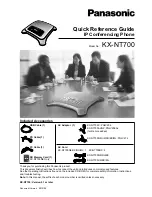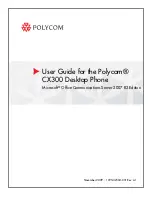
LG Electronics Inc.
N510
9/168
3. Structure and Functions of Tri-band CDMA Mobile Phone
The hardware structure of CDMA mobile phone is made up of radio frequency (RF) part and logic part. The RF part
is composed of Receiver part (Rx), Transmitter part (Tx) and Local part (LO). For the purpose of operating on tri-
band, It is necessary dual Tx path, tri Rx path, dual PLL and switching system for band selection. The mobile phone
antenna is connected with the frequency separator which divide antenna input/output signals between Cellular
frequency band (824~894 MHz) and PCS frequency band (1850~1990MHz). Each separated path is linked with the
Cellular duplexer and PCS duplexer. Duplexer carries out separating Rx band and Tx band. The Rx signals from the
antenna are converted into intermediate frequency(IF) band by the frequency synthesizer and frequency down
converter. And then, pass SAW filter which is a band pass filter for removing out image frequency. The IF output
signals that have been filtered is converted into digital signals via Analog-to-Digital Converter (ADC). In front of the
ADC, switching system is required to choose which band path should be open. The digital signals send to 5
correlators in each CDMA de-modulator. Of these, one is called a searcher whereas the remaining 4 are called data
receivers (fingers). Digitalized IF signals include a great number of call signals that have been sent out by the
adjacent cells. These signals are detected with pseudo-noise sequence (PN Sequence). Signal to interference ratio
(C/I) on signals that match the desired PN sequence are increased through this type of correlation detection process,
but other signals obtain processing gain by not increasing the ratio. The carrier wave of pilot channel from the cell
site most adjacently located is demodulated in order to obtain the sequence of encoded data symbols. During the
operation with one cell site, the searcher searches out multi-paths in accordance with terrain and building reflections.
On three data receivers, the most powerful 3 paths are allocated for the parallel tracing and receiving. Fading
resistance can be improved a great deal by obtaining the diversity combined output for de-modulation. Moreover, the
searcher can be used to determine the most powerful path from the cell sites even during the soft handoff between the
two cell sites. Moreover, 3 data receivers are allocated in order to carry out the de-modulation of these paths. Output
data that has been demodulated changes the data string in the combined data row as in the case of original
signals(deinterleaving), and then, are demodulated by the forward error correction decoder which uses the Viterbi
algorithm.
Mobile station user information send out from the mobile station to the cell site pass through the digital voice
encoder via a mike. Then, they are encoded and forward errors are corrected through the use of convolution encoder.
Then, the order of code rows is changed in accordance with a certain regulation in order to remove any errors in the
interleaver. Symbols made through the above process are spread after being loaded onto PN carrier waves. At this
time, PN sequence is selected by each address designated in each call.
Signals that have been code spread as above are digital modulated (QPSK) and then, power controlled at the
automatic gain control amplifier (AGC Amp). Then, they are converted into RF band by the frequency synthesizer
synchronizing these signals to proper output frequencies.
Transmit signals obtained pass through the duplexer filter and then, are sent out to the cell site via the antenna.
LG511C
Summary of Contents for LG511C
Page 1: ...Internal Use Only Service Manual LG511C Date September 2011 Issue 1 0 ...
Page 28: ...LG Electronics Inc LN510 27 168 Figure 1 1 Block Diagram of LG511C LG511C ...
Page 30: ...LG Electronics Inc LN510 29 168 LG511C ...
Page 50: ...LG Electronics Inc LN510 49 168 Waveform Waveform 4 1 1 c 4 1 1 d U1001 pin2 U1003 pin1 ...
Page 96: ...LG Electronics Inc LN510 95 168 1 ...
Page 98: ...LG Electronics Inc LN510 97 168 1 2 3 4 5 LG511C ...
Page 108: ...LG Electronics Inc LN510 107 168 Test points Test points 1 TP1 4 TP4 2 TP2 3 TP3 5 TP5 LG511C ...
Page 134: ...LG Electronics Inc LN510 133 168 Appendix Appendix ...
Page 136: ...LG Electronics Inc LN510 135 168 Appendix 2 Circuit diagram Appendix 2 Circuit diagram ...
Page 144: ...LG Electronics Inc LN510 143 168 Appendix 3 BGA Pin Map Appendix 3 BGA Pin Map ...
Page 145: ...LG Electronics Inc LN510 144 168 Not Used 3 1 U1601 BCM2070_BT 3 1 U1601 BCM2070_BT ...
Page 146: ...LG Electronics Inc LN510 145 168 3 2 U2001 QSC6075T 3 2 U2001 QSC6075T ...
Page 149: ...LG Electronics Inc LN510 148 168 3 5 U4002 LM49151_AUDIO AMP 3 5 U4002 LM49151_AUDIO AMP ...
Page 151: ...LG Electronics Inc LN510 150 168 Appendix 4 Component Layout Appendix 4 Component Layout ...
Page 152: ...LG Electronics Inc LN510 151 168 4 1 Main PCB Component Layout 4 1 Main PCB Component Layout ...
Page 161: ...LG Electronics Inc LN510 1 Appendix 6 Part List Appendix 6 Part List LG511C ...











































